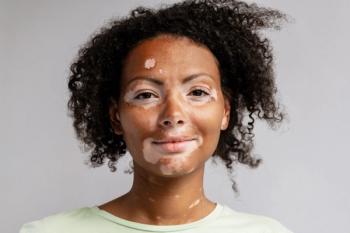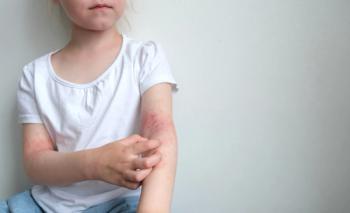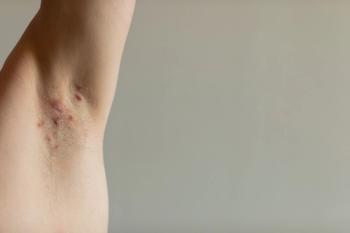
Povorcitinib Shows Hope for Patients with Hidradenitis Suppurativa in Phase 3 Trials
Povorcitinib shows promising results for hidradenitis suppurativa, offering significant lesion reduction and pain relief in recent phase 3 trials.
New 24-week data revealed that povorcitinib (INCB54707), an oral JAK1 inhibitor, continues to result in improvements for adults with moderate to severe hidradenitis suppurativa (HS), according to results from two phase 3 trials that were presented at the 2025 European Association of Dermatology and Venereology (EADV) Congress.
These findings support earlier results from the STOP-HS1 and STOP-HS2 trials, which will be useful for approval in Europe in 2025 and in the U.S. in early 2026. Incyte, the drug’s manufacturer, said in a press release that the results provide strong support for povorcitinib as a potential new treatment option for a condition with limited therapies.
HS is a chronic inflammatory skin condition that causes painful nodules and abscesses in areas where skin rubs together, such as the underarms and groin. The disease can cause scarring, reduced mobility and severe pain—affecting quality of life. Current treatments are limited, and many patients struggle to find relief, highlighting the need for new therapies.
The condition
The first FDA-approved therapy, Humira (adalimumab), helps
As for the new STOP-HS results, they are significant.
For example, nearly 60% of patients treated with oral povorcitinib achieved HiSCR50, or had a 50% or greater reduction in the total number of abscesses and inflammatory nodules by week 24.
“HS remains a challenging and often debilitating condition, and many patients are in need of new, well-tolerated and effective therapies that address prominent signs and symptoms of the disease, including inflammatory lesions and pain,” Pablo J. Cagnoni, M.D., president and head of research and development at Incyte, said in a
Both STOP-HS1 and STOP-HS2 enrolled about 600 adult patients with moderate to severe HS. Participants received once-daily povorcitinib at 45 mg or 75 mg or a placebo for 12 weeks, followed by an extension phase. At the end of this period, both studies met their primary endpoints at each tested dose.
A significantly greater proportion of patients taking povorcitinib achieved HiSCR50 compared with placebo.
In STOP-HS1, 40.2% of patients on the 45 mg dose and 40.6% on the 75 mg dose reached HiSCR50 compared to 29.7% on placebo. STOP-HS2 had similar findings, with 42.3% of patients on either dose achieving HiSCR50 compared to 28.6% on placebo.
The 24-week data also showed that efficacy improved over time.
Nearly 60% of patients on either dose achieved HiSCR50 by week 24, with response rates ranging from 50% to 64% across the two studies. More stringent thresholds were also met: HiSCR75 was achieved by up to 40% of patients, HiSCR90 by up to 28% and HiSCR100 by more than one in five patients.
Pain reduction was another key outcome.
Patients reported decreases in skin pain by the third week of treatment, with improvements continuing through week 24. By the end of the period, 62% to 70% of patients randomized to povorcitinib reported mild or no pain. Up to 51% of patients experienced reduced draining tunnels, an especially burdensome symptom of HS.
The
It was found that most adverse events were mild to moderate, with serious adverse events reported in less than 5% of patients. No major adverse cardiovascular events or deaths were reported. Both doses were well tolerated as well, and the rate of treatment-emergent adverse events was similar to earlier reports.
In addition to HS, povorcitinib is being studied in vitiligo, prurigo nodularis asthma and chronic spontaneous urticaria.
With few available therapies, patients tend to face long delays before finding their effective treatment. The responses seen in STOP-HS1 and STOP-HS2 suggest that povorcitinib could become an important addition to the treatment landscape if approved.
As Incyte prepares to submit regulatory applications, dermatologists and patients will likely be watching closely. For those living with HS, this potentially new oral treatment that not only reduces lesions but also eases pain offers a potential breakthrough in care.
Newsletter
Get the latest industry news, event updates, and more from Managed healthcare Executive.

















































